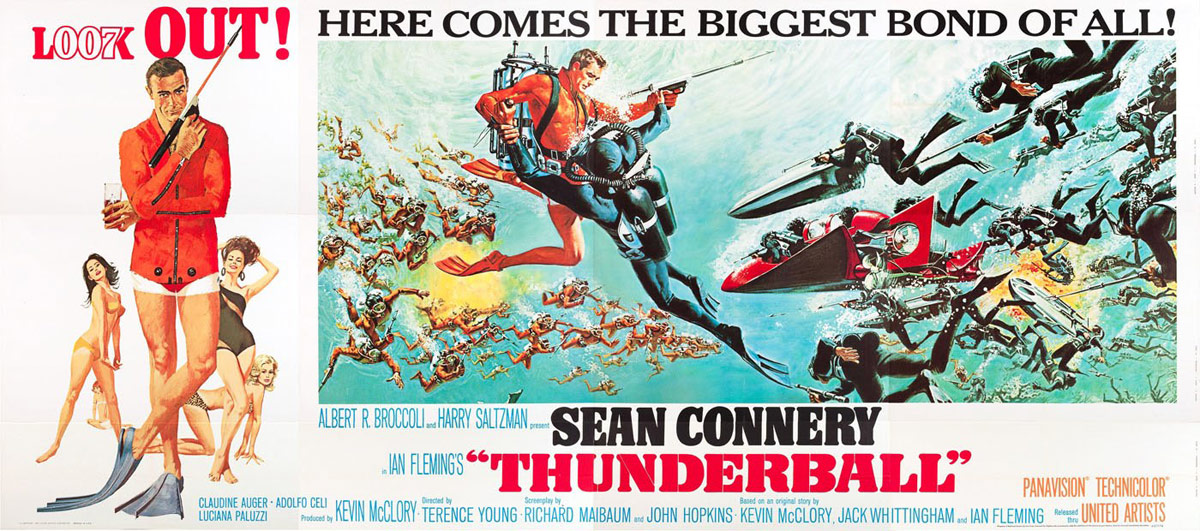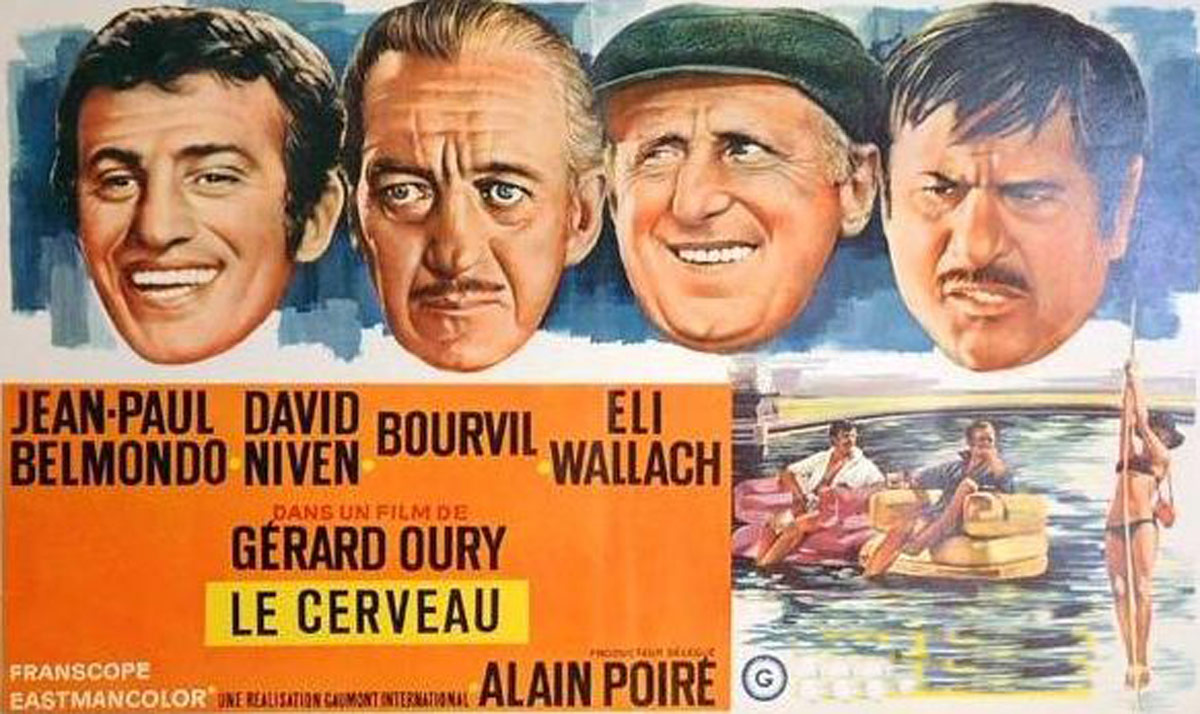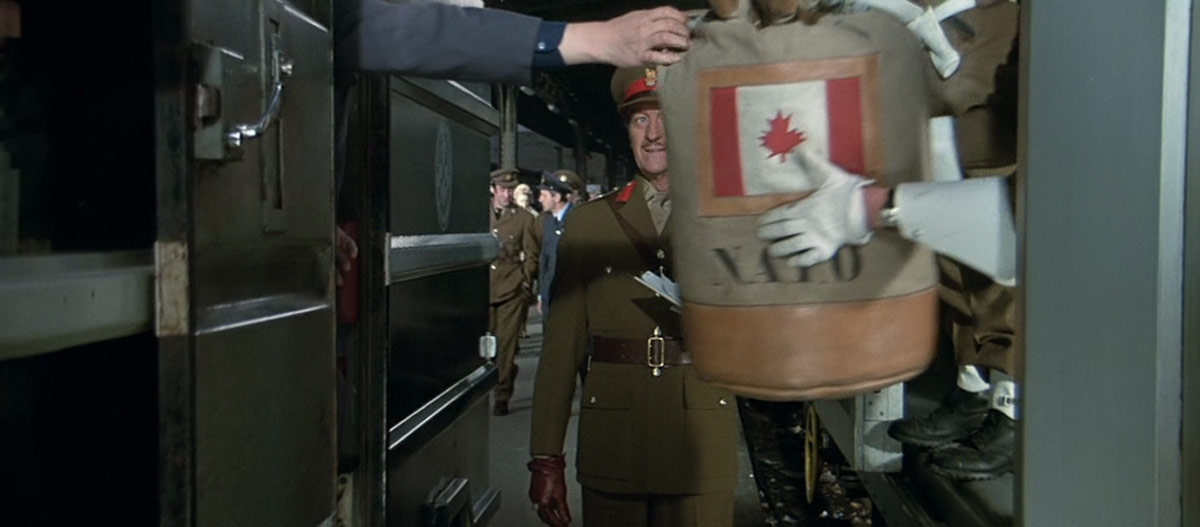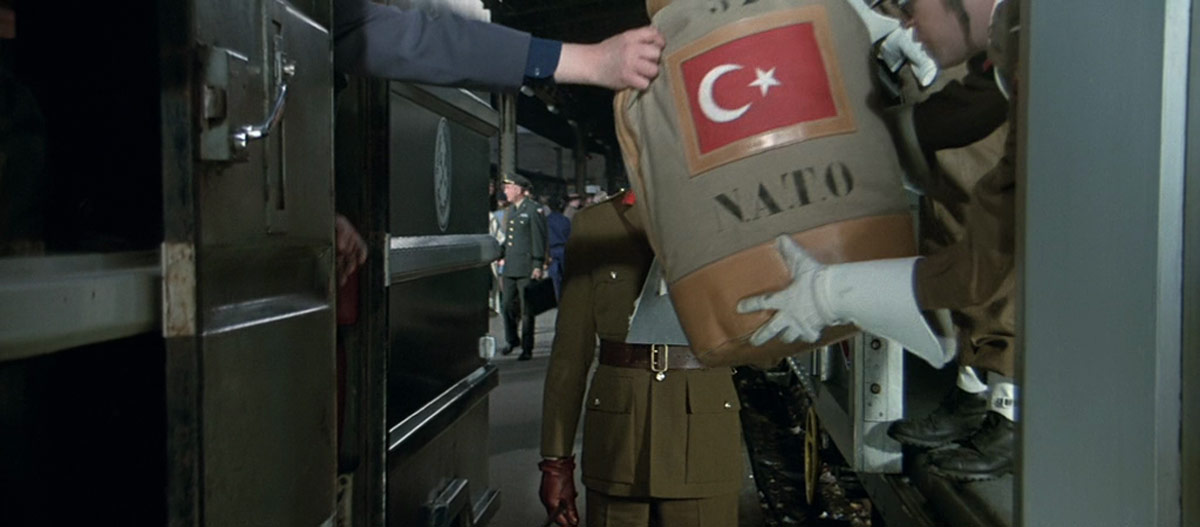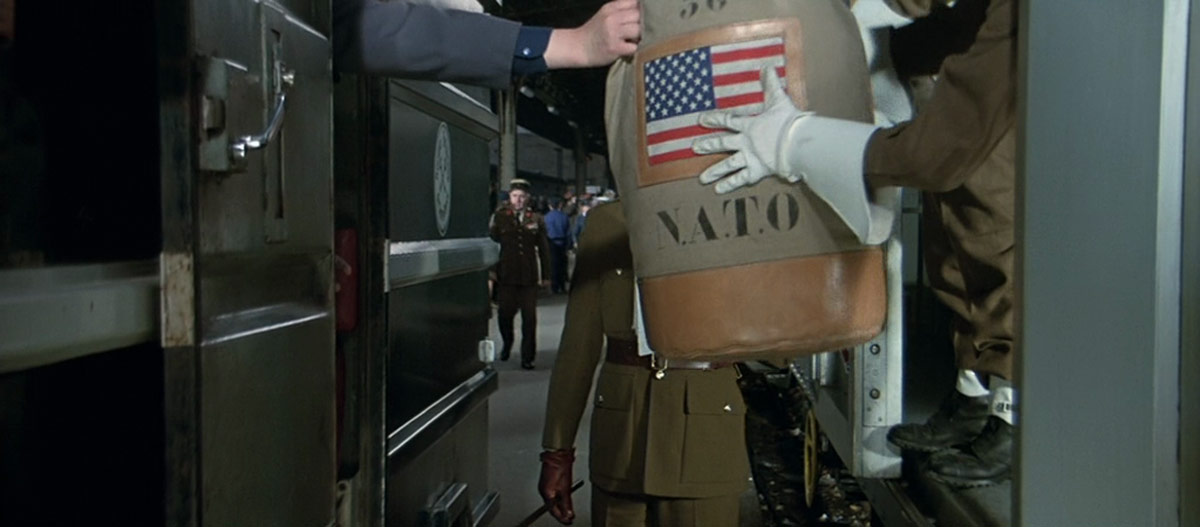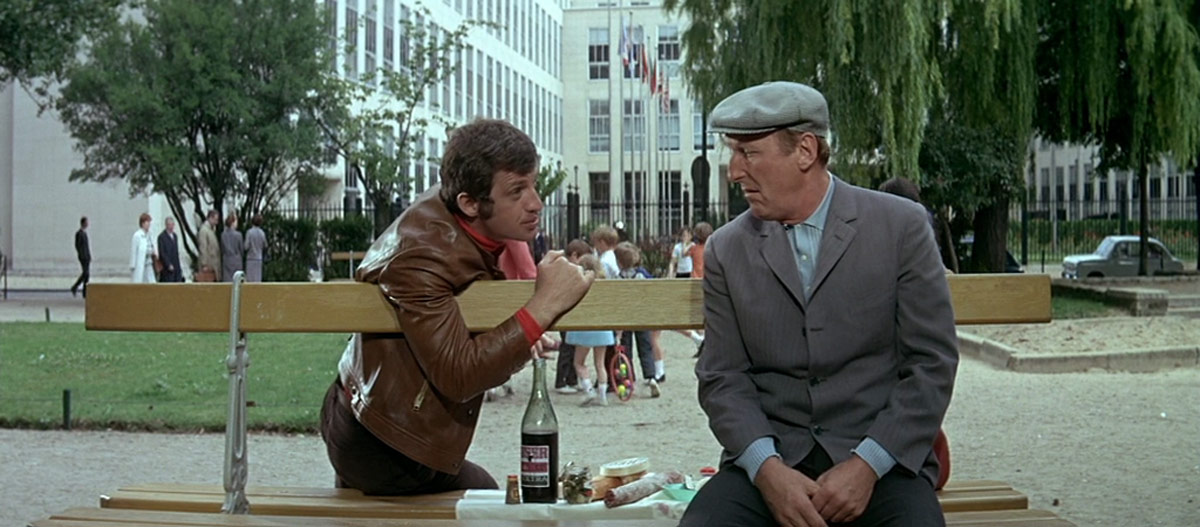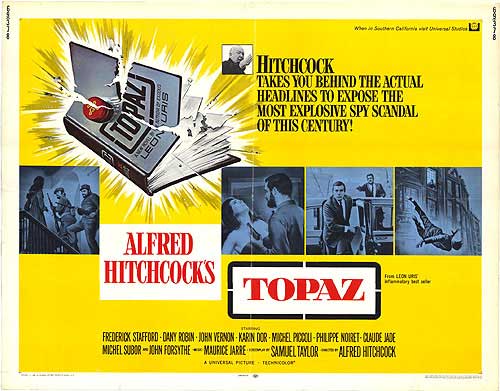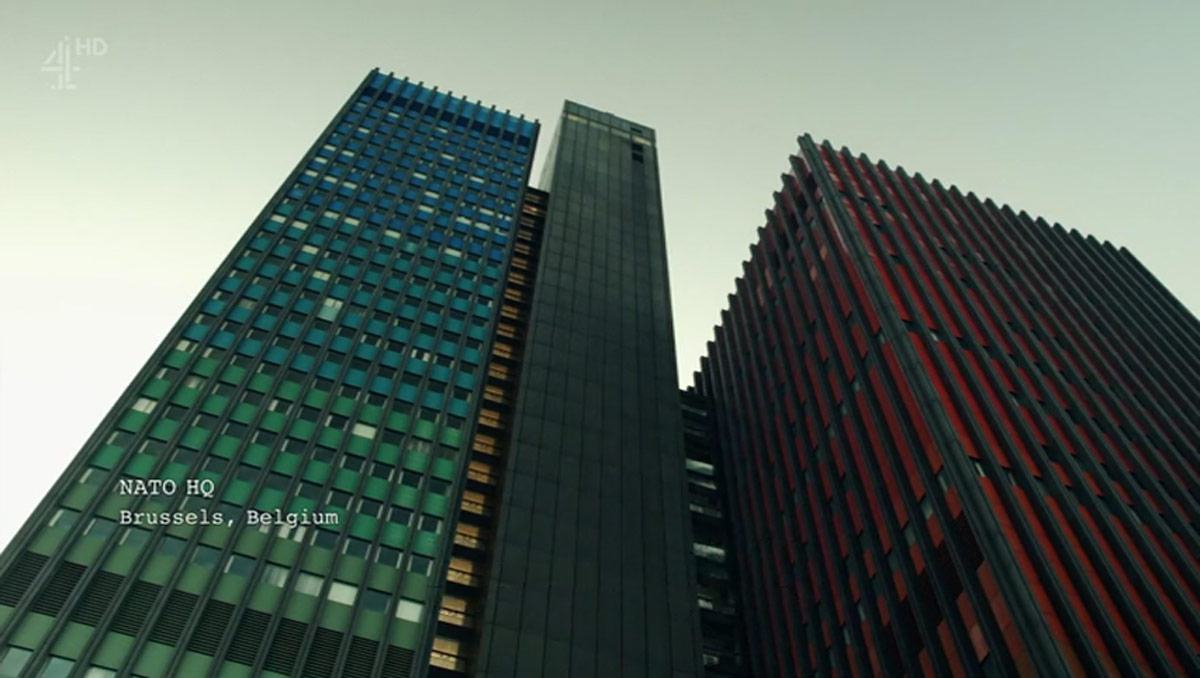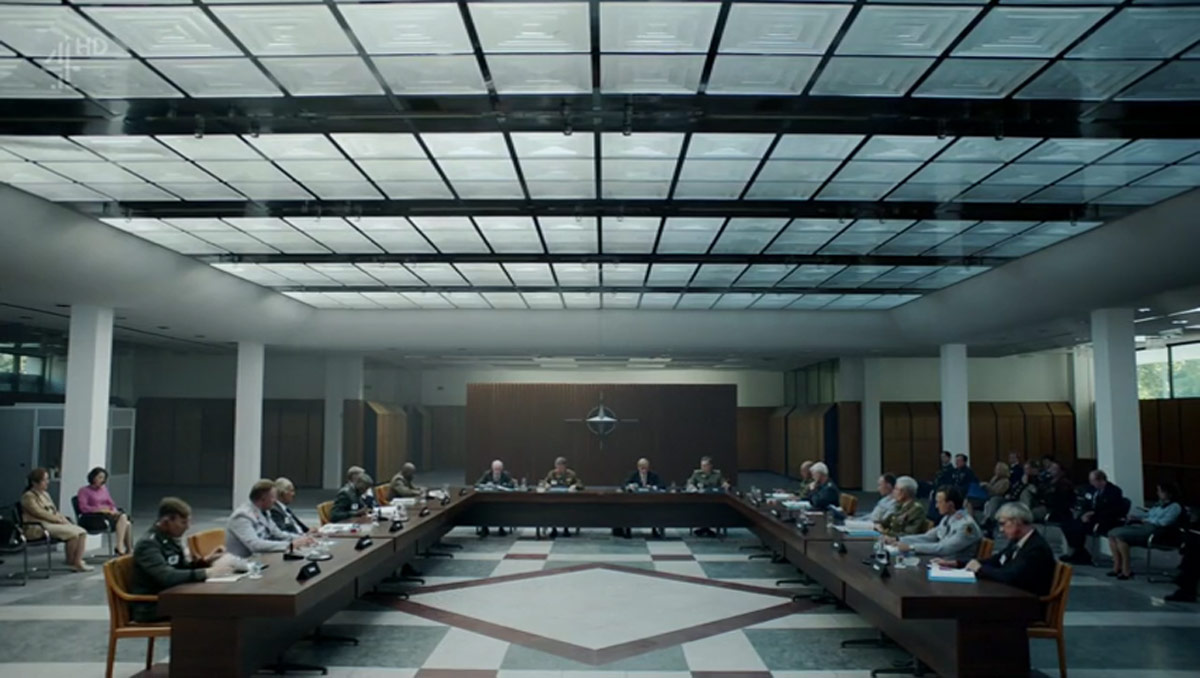THUNDERBALL (1965), the fourth installment in the popular James Bond series of films, provides a useful example to illustrate the different ways that the NATO references were used. The publicity for THUNDERBALL emphasised the film’s escalated spectacle and scale, and the linkage of NATO (which had been absent from the previous films in the series) offered an increased global scope to the production as well as supplying the necessary Cold War gravitas to the narrative.
The plot sees Britain and the United States blackmailed by the terrorist organization SPECTRE (Special Executive for Counter-intelligence, Terrorism, Revenge and Extortion), whose ambitious “NATO project” consists of hijacking two nuclear bombs from a NATO training flight and threatening to destroy a major city unless a huge ransom is paid by the “North Atlantic Treaty powers”. By thwarting this global threat, James Bond implicitly functions as a hero of the NATO Alliance, exemplified by the spectacular climax of Allied collaboration that sees 007 leading the US Navy and the Royal Navy to defeat the forces of SPECTRE.
NATO would ultimately show its gratitude to Bond by including the opening sequence of FROM RUSSIA WITH LOVE (1962) as the introduction to the NATO security education film A PUZZLE FOR COLLECTORS (1971).
The idea of NATO as a transnational pool of financial capital ripe for plunder is exploited in LE CERVEAU (1969), a heist comedy that uses a topical event, the move of NATO headquarters from Paris to Brussels in 1967, to set its plot in motion.

